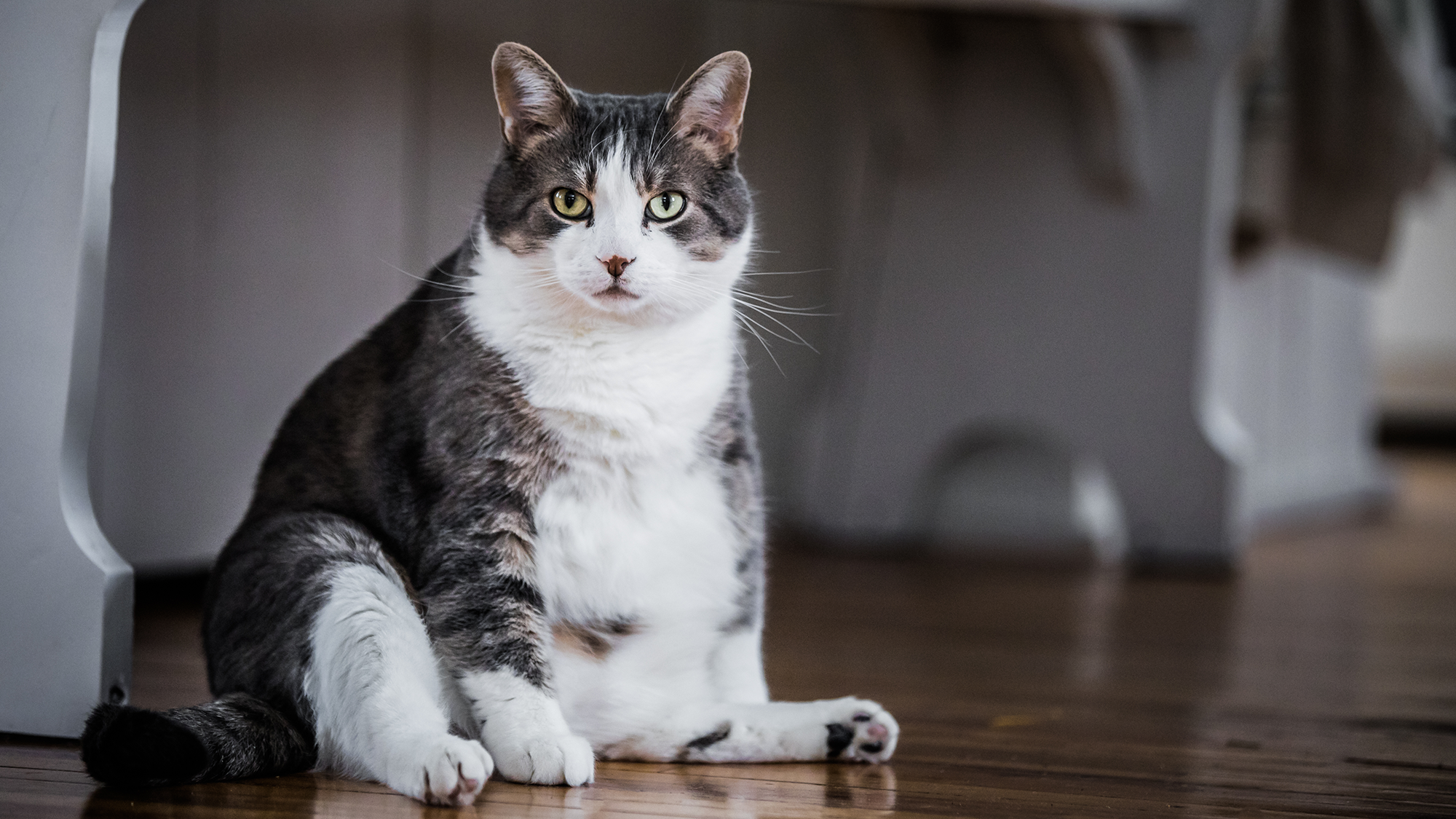

Among domestic cats, feline obesity is the most frequent nutritional disorder veterinarians in the United States see. Defined as a body weight that is 20 percent or more above a normal weight of eight to 12 pounds, it can impact a cat’s longevity and lead to diabetes and chronic inflammation among other health problems. A study published in the Journal of Animal Science in September found that overeating has some observable effects on feline gut microbiota and digestive system.
[Related: A new shot can be a safe and effective alternative to surgical spaying.]
According to study co-author and University of Illinois nutritional scientist Kelly Swanson, about 60 percent of cats in the US are considered overweight.
“While many studies have investigated feline weight loss, there has been little focus on the opposite process, which is also important. In this study, we wanted to learn more about the metabolic and gastrointestinal changes that occur as a result of overeating and weight gain in cats,” Swanson said in a statement.
Complex changes
In the study, 11 adult spayed female cats were fed a standard dry cat food for two weeks. Baseline body measurements were taken and they were then allowed to eat as much as they wanted. The researchers also collected blood and poop samples at regular intervals and monitored their physical activity. Weight gain was assessed using a body condition score (BCS), which is similar to the controversial body mass index (BMI) in humans. BCS is measured on a 9-point scale where anything 6 or above is considered overweight. Like in humans, BCS is a quantitative, but also subjective, method for evaluating body fat in pets.
The cats immediately increased their food intake when they were allowed to overeat and they began to gain weight. When the study began, their average BCS was 5.41. Their BCS increased to 8.27 after 18 weeks of overfeeding. This corresponds to the cats being about 30 percent overweight by body mass.
The researchers also analyzed changes in how much the felines pooped, their gastrointestinal transit time, how well nutrients were being digested, and changes in the build up of their gut microbiome over the 20-week study.
“We found that as cats ate more and gained weight, gastrointestinal transit time was reduced, and so was digestive efficiency. When the body gets less food, it will be more efficient in extracting nutrients. But when the amount of food increases, it passes through the digestive system faster and fewer nutrients are extracted in the process,” Swanson explained.
A cat-specific bacteria shift
During the 18 weeks of weight gain, the composition of the cats’ gut microbiome also changed. An anti-microbial bacteria that helps stimulate the immune system and inhibits pathogens called Bifidobacterium increased. At the same time, a bacteria that degrades fiber and has been linked to pro-inflammatory disease called Collinsella decreased. According to Swanson, these results are the opposite of what has been measured in overweight humans and suggests that their association to weight gain is complicated.
[Related: Your cat probably knows when you’re talking to it.]
“The change in the gastrointestinal transit time was a novel finding and a potential reason for the change in fecal microbiota. Future studies should consider measuring transit time to better explain modifications to the microbiome of pets,” Swanson added.
The more the cats ate, the more they pooped. At the same time that the cats were putting on pounds, fecal pH decreased, meaning that their poop became more acidic. A low fecal pH in humans indicates that the body isn’t absorbing fat or carbohydrates well. It appears that a lower fecal pH with higher food intake also reduced digestibility for cats.
To measure activity level, the team used special collars. The cats were kept in a group setting where they could interact with one another and play with toys, except on the days when stool samples were collected.
“We expected that weight gain might lead to decreased physical activity, but we did not observe any consistent changes in activity level. However, this could vary with individual cats and their environment, and how much their owners interact with them,” said Swanson.
At the end of the study, the cats were put on a restricted-feeding diet that helped them return to their previous weights. A better understanding of the gastrointestinal and metabolic changes that occur with obesity in domestic pets could help with future prevention and treatment plans. Another new study co-authored by Swanson, demonstrated that restricted feeding can promote safe weight and fat loss in cats.
The team also suggests that pet parents encourage regular physical activity with their cats. They can make it fun for the cats by stimulating foraging by placing food around the house, or using food puzzles during mealtime. Both of these strategies promote engagement and mental enrichment, according to Swanson.
